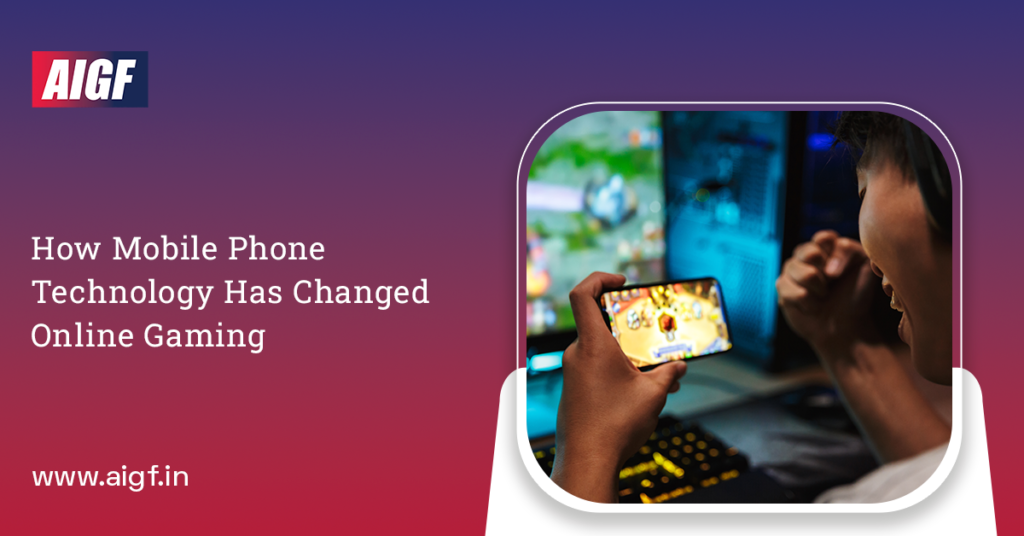Mobile phone technology has not only altered online gaming; it is largely responsible for online gaming as we know it. While mobile technology cannot claim to be the reason for the popularity of gaming, it is undeniably responsible for the sheer scale and accessibility of the games we now take for granted.
How Mobile Phone Technology Has Changed Online Gaming
Online gaming has evolved significantly owing to mobile phone technology, which is also mainly responsible for the existence of online gaming as we know it today. While mobile technology cannot be directly attributed to the rise in popularity of gaming, mobile phones are unquestionably to credit for the size and accessibility of the games we now routinely access.
When the video gaming era first started, anyone who wanted to play a half-decent game on a screen had to head over to an arcade. If you were lucky, you might find a Space Invaders machine in a youth group or senior high school common area. Video gaming remained a niche interest.
In the 1970s, the first home consoles debuted. The most well-known of these was Pong, which involved hitting a square, 2D ball back and forth between two paddles. Although it appears exceedingly archaic when viewed through modern eyes, it served as the foundation for something truly spectacular. After that, home consoles improved, and by the time Sega released the MegaDrive and Nintendo released the NES, home gaming had adopted color and had graphics that were comparable to those of arcades.
Yet gaming remained a solitary hobby. The internet was still in its infancy, and dial-up modem connections were agonizingly sluggish. You had to unplug your landline in order to go online. Unless you had the luxury of two landlines, there was no way to utilize the phone and the internet at the same time.
It is well known that when mobile phones were originally released, no one believed they would ever become popular due to their size. The original Motorola phone weighed more than 2 pounds. It was not something you could carry around in your pocket. But as phones shrank in size, 28% of American households had mobile phones by 2000. In 2005, this figure rose sharply to 68%.
The popularity of small phones also had another benefit. The first text messages were sent in 1992, although they had originally been intended for talking devices. Phones have evolved from being only communication tools to holding promises of at-home entertainment. Nokia phones in 1998 came bundled with Tron’s Snake. While simplistic in the extreme, it opened the path for the mobile gaming experience we currently know and love.
Mobile phones were no longer only communications devices, they had simple games, and you could listen to music. Early in the 2000s, the Blackberry was introduced, enabling businesswomen and men to send and receive emails while on the go. The launch of the iPhone, though, was the paradigm-shifter.
The iPod was already in use, and users enjoyed simple games and playing songs on it. Gaming on consoles and computers has advanced significantly thanks to slick graphics and animations. Through the 1990s, games were more accessible online and on discs, and in the early 2000s, gaming stopped being mostly a lonely pastime. The digital storefront Steam was launched in 2003, enabling players to purchase and review games online. Although upload and download rates were still excruciatingly sluggish, the start of games with widespread participation was only around the corner.
With more than ten million active memberships, World of Warcraft, which launched in 2004, became the first massively multiplayer online phenomenon. When Apple introduced the App Store in July 2008, gaming became a sizable component of the mobile experience.
At first, games played on iPhones were very different from games played at home. The processing power and connectivity of the consoles and PCs were superior. So, a home-based desktop PC was the go-to site to play the greatest sports simulators or first-person shooters. iPhone games were simpler to play and made specifically for mobile devices. Everyone was hurling birds left, right, and center at the moment because Flappy Bird was such a huge hit.
In 2016, the iOSA operating system’s Game Center feature was officially discontinued, however, it was later brought back. Players could connect with friends and arrange online multiplayer games from this area of the operating system. Google and Android smartphones both provide comparable features. There is presently little distinction between games played on a desktop or in a mobile environment. This is mainly because phones now have significantly more processing power and 4G and 5G connectivity. Moreover, fiber optics offers extremely high internet connections, so you can stream anything you want to watch or play.
Cloud gaming has been the most significant transformation. Almost everyone would need access to high-speed connectivity to make this a reality. It was no longer necessary to have a large amount of storage on the device. Stadia was introduced by Google in 2019. It was a cloud-based gaming service that enabled people to play games without a console.
Because most of these changes are gradual, we are occasionally unaware of the remarkable progress made in a relatively short period of time. For instance, not very long ago, we were thrilled to be able to operate a 2D snake with terrible pixelation! An estimated $196 billion is now spent annually on online gaming, with the mobile sector accounting for 45% of that total.
Credit: Concept Phones











Comments
Comments are closed.